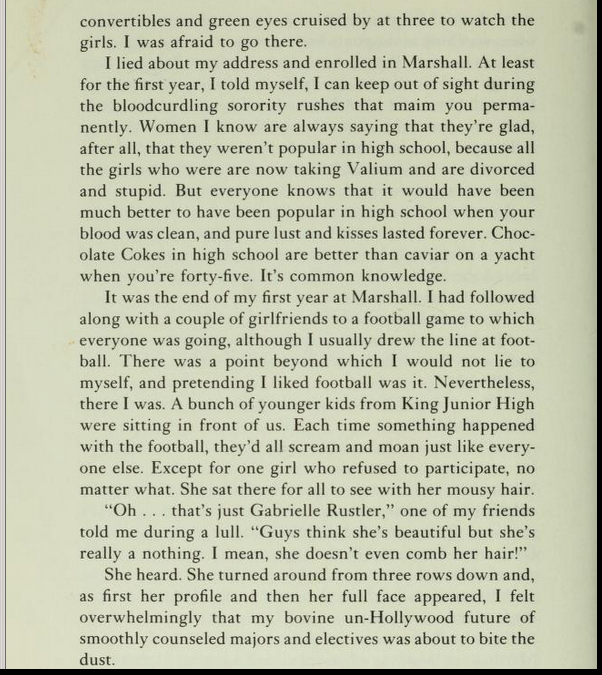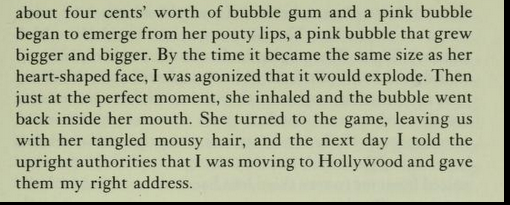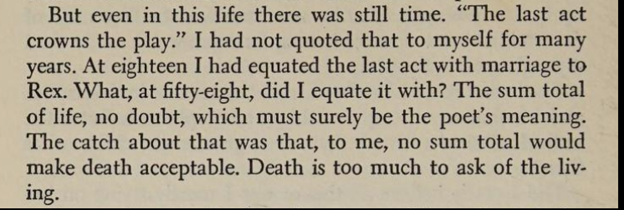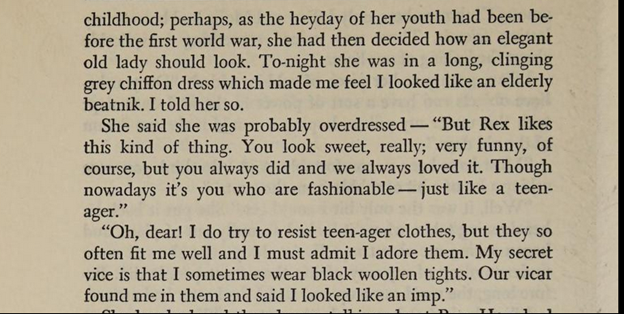It’s true that when it comes to fluff reading, I prefer British writers. Somehow the tone of most American chick lit irritates me: a little earnest, a little twee, a little . . . something. I like the drier humor, the stiffer upper lip, of the Brits. On the other hand, way out on the edge of the American continent, we find Carolyn See, whose LA is as forceful a presence in her books as Lancashire is for Trisha Ashley.
See aimed to write literary fiction, but was often categorized as a “women’s writer.” When I was much younger, I did read her hoping for ideas about how to live as an intellectual woman, how to combine love and work. But her books are not chick lit; they’re more ambiguous than that, and I agree with a review by Ursula Le Guin, of Golden Days (now where did I come across that? sorry, I will paraphrase), suggesting that Eastern critics could not appreciate the literary quality of this book because of its joyful Californian attitude towards nuclear apocalypse.
I re-read Golden Days because over the winter holidays I found myself (no, I just mean I was there, I didn’t “find myself” in some 70s sense) in Topanga Canyon, where See lived, and where she set several of her books. Apparently I have no imagination, because despite See’s descriptions, it was only after being driven up and around and over and down and up and down and up a barely-paved goat track lined with live oaks and eucalypts that I realized she was in no way exaggerating for effect when she wrote about Topanga Canyon.
“The house sat out on a wide raw crescent of cut and fill. That half-moon of dirt hung, just hung there in the air, over another one of those astonishing cliffs above nowhere. Across the chasm from what might be our ‘backyard’ were stones the size of skyscrapers. Due east, a wilderness of bougainvillea and eucalyptus, sage, rosemary, mint, and a couple of blazing yellow acacias. We might have been in Australia . . . but instead we could hear Van Morrison, the Doors, windchimes, barking dogs. We smelled marijuana with the rosemary, and the house tout said, sizing us up, ‘If this section of the canyon caught fire, the city’d be high for a week. They say.'”
Carolyn See, Golden Days (New York: McGraw-Hill, 1987), 10.
I think this is probably See’s second Topanga Canyon home. She describes the first one in her family memoir, Dreaming.
The canyon “began to smell pretty good; arid, mentholated, medicinal, the air-equivalent of a margarita with plenty of salt and lemon. . . . We trudged up the switchback, past eucalyptus and prickly pear. On the last triangle of steep cliff in front of the house, calendula and Martha Washington geraniums bloomed in crevices between hot rocks. . . . The lady showed us the inside of the cabin. In places you could see air between the slats. . . . She showed us the kerosene water heater . . . . Out on the splintery balcony there were two old-fashioned metal camp beds, piled with pillows bleached gray by the sun. You could sit down on a bed, hook your feet in the balcony, and your body balanced perfectly, haltered between gravity and light, brushed by breezes. . . . the outdoor shower [was] a shed with a tank on top.”
Carolyn See, Dreaming: Hard Luck and Good Times in America (New York: Random House, 1995), 144-5.
I hadn’t read Dreaming before my recent interaction with it, and I had hoped for a bit more of Carolyn and less of her family, but it was certainly interesting to compare a few generations of her family with my own.
In her book about writing, she tells about her longing “to be published by The Atlantic Monthly. If I’d given it a moment’s rational thought, I would have realized that the last thing on earth a Boston-based, male-dominated, utterly dignified magazine would want or need would be the semi-hysterical, heartbroken howlings of a West Coast divorcée. I didn’t realize it, though. I kept sending them things—sending them and sending them—to a kind but strict man named C. Michael Curtis, who finally got fed up and write something to me like: ‘Dear Miss See, I think that by now you’ve sent us everything but your family photograph album. I should think it would be evident that we’re not interested in the kind of things you write.’
“I cried and kicked the walls, but when I calmed down I sent him a handful of photographs—of me and my then-grubby kids living a raffish life in the wilds of Topanga Canyon with our own tram line, switchback path, goat, chickens, etc. Not dead yet, thank you very much!“
Carolyn See, Making a Literary Life: Advice for Writers and Other Dreamers (New York: Random House, 2002), 93.
She also describes some of the neighbors, who add to the ambience:
“For awhile, when I was in my thirties, I had a crush on a divorced guy who lived down the hill from us in Topanga Canyon. For two years of my life, I thought: Can I see Mr. Lopez? If I go out on my balcony, I might be able to see Mr. Lopez. Is that Mr. Lopez down there?” (19)
“It’s a warm Sunday morning [in the 1960s], we’re drinking coffee on the balcony, looking out over acres of chaparral, and suddenly we see a naked lady doing yoga.” (228)
I feel like there’s more in Making a Literary Life about See’s own setting than there actually is, because her voice is so strong, so amused and cheerful and self-mocking, that it creates a sense of place all by itself. One chapter in Dreaming is called “The Embarrassing Californianness of It All,” which sums up what I mean. Sure, lots of elements of See’s books sound nutty, positively embarrassing, and definitely Californian. She knows that about the affirmations, the cock-eyed craziness of insisting to yourself that you live in abundance when actually you live in squalor: yes, she acknowledges, all that is “silly,” and yet, does it hurt you to say that? Especially if you start saving even a dollar a week, trying to build a nest egg that will get you out of squalor, and encouraging yourself to do so by imagining yourself living in abundance? She knows: and she believes in affirmations anyway.
Mantel’s old Northern grannies would laugh at, not with, Carolyn See, and yet once again, I see a connection. They’re women who take up space, who believe in themselves (even if See needs affirmations to help her believe), who do the things they’re going to do, and whose daughters take over from them: Lisa See is also a writer.




